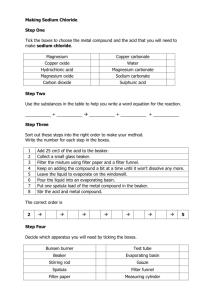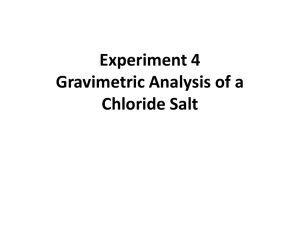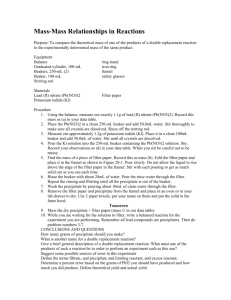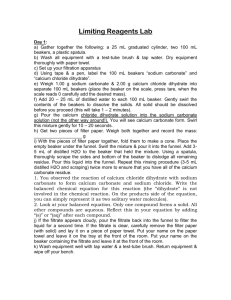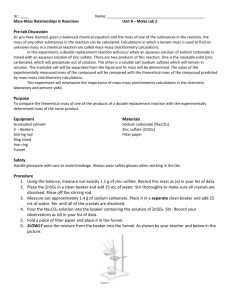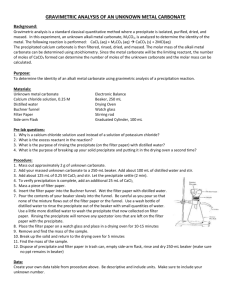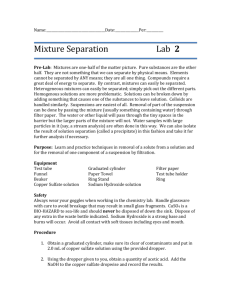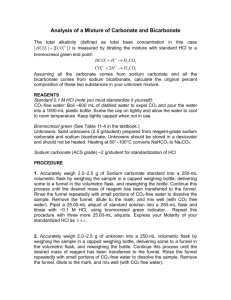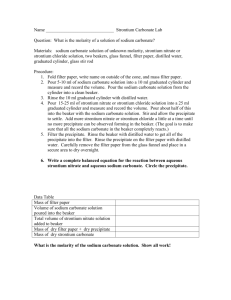Gravimetric Analysis of a Soluble Carbonate
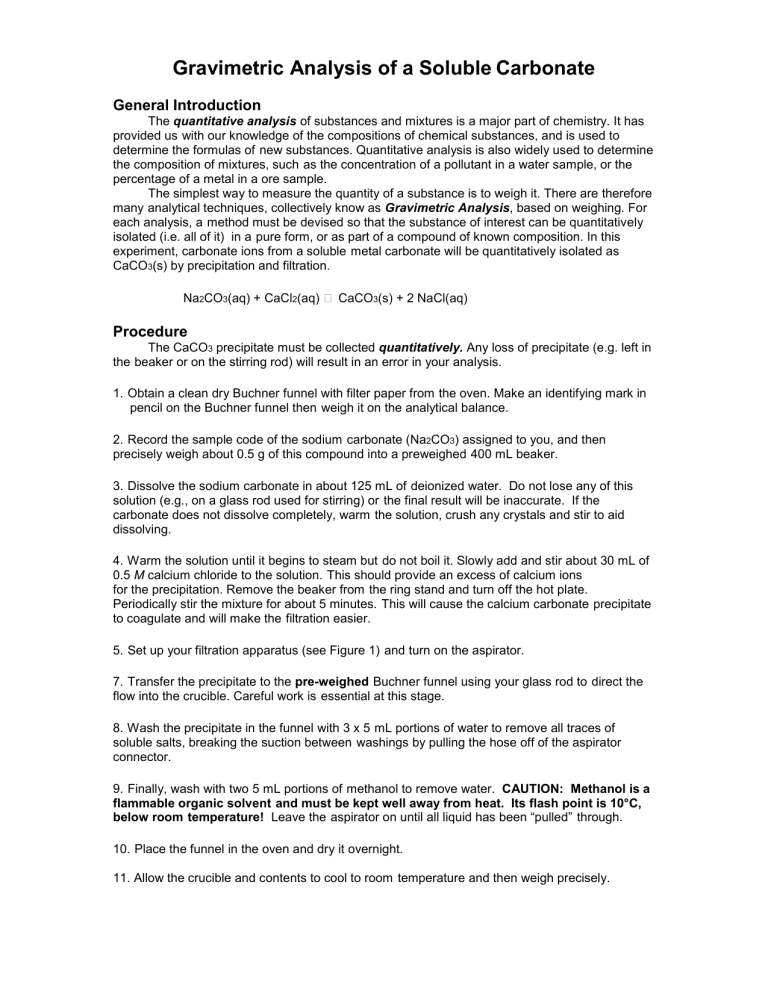
Gravimetric Analysis of a Soluble Carbonate
General Introduction
The quantitative analysis of substances and mixtures is a major part of chemistry. It has provided us with our knowledge of the compositions of chemical substances, and is used to determine the formulas of new substances. Quantitative analysis is also widely used to determine the composition of mixtures, such as the concentration of a pollutant in a water sample, or the percentage of a metal in a ore sample.
The simplest way to measure the quantity of a substance is to weigh it. There are therefore many analytical techniques, collectively know as Gravimetric Analysis , based on weighing. For each analysis, a method must be devised so that the substance of interest can be quantitatively isolated (i.e. all of it) in a pure form, or as part of a compound of known composition. In this experiment, carbonate ions from a soluble metal carbonate will be quantitatively isolated as
CaCO
3
(s) by precipitation and filtration.
Na
2
CO
3
(aq) + CaCl
2
(aq)
CaCO
3
(s) + 2 NaCl(aq)
Procedure
The CaCO
3
precipitate must be collected quantitatively.
Any loss of precipitate (e.g. left in the beaker or on the stirring rod) will result in an error in your analysis.
1.
Obtain a clean dry Buchner funnel with filter paper from the oven. Make an identifying mark in pencil on the Buchner funnel then weigh it on the analytical balance.
2.
Record the sample code of the sodium carbonate (Na
2
CO
3
) assigned to you, and then precisely weigh about 0.5 g of this compound into a preweighed 400 mL beaker.
3.
Dissolve the sodium carbonate in about 125 mL of deionized water. Do not lose any of this solution (e.g., on a glass rod used for stirring) or the final result will be inaccurate. If the carbonate does not dissolve completely, warm the solution, crush any crystals and stir to aid dissolving.
4.
Warm the solution until it begins to steam but do not boil it. Slowly add and stir about 30 mL of
0.5 M calcium chloride to the solution.
This should provide an excess of calcium ions for the precipitation. Remove the beaker from the ring stand and turn off the hot plate.
Periodically stir the mixture for about 5 minutes.
This will cause the calcium carbonate precipitate to coagulate and will make the filtration easier.
5.
Set up your filtration apparatus (see Figure 1) and turn on the aspirator.
7.
Transfer the precipitate to the pre-weighed Buchner funnel using your glass rod to direct the flow into the crucible. Careful work is essential at this stage.
8.
Wash the precipitate in the funnel with 3 x 5 mL portions of water to remove all traces of soluble salts, breaking the suction between washings by pulling the hose off of the aspirator connector.
9.
Finally, wash with two 5 mL portions of methanol to remove water. CAUTION: Methanol is a flammable organic solvent and must be kept well away from heat . Its flash point is 10°C, below room temperature!
Leave the aspirator on until all liquid has been “pulled” through.
10.
Place the funnel in the oven and dry it overnight.
11. Allow the crucible and contents to cool to room temperature and then weigh precisely.

